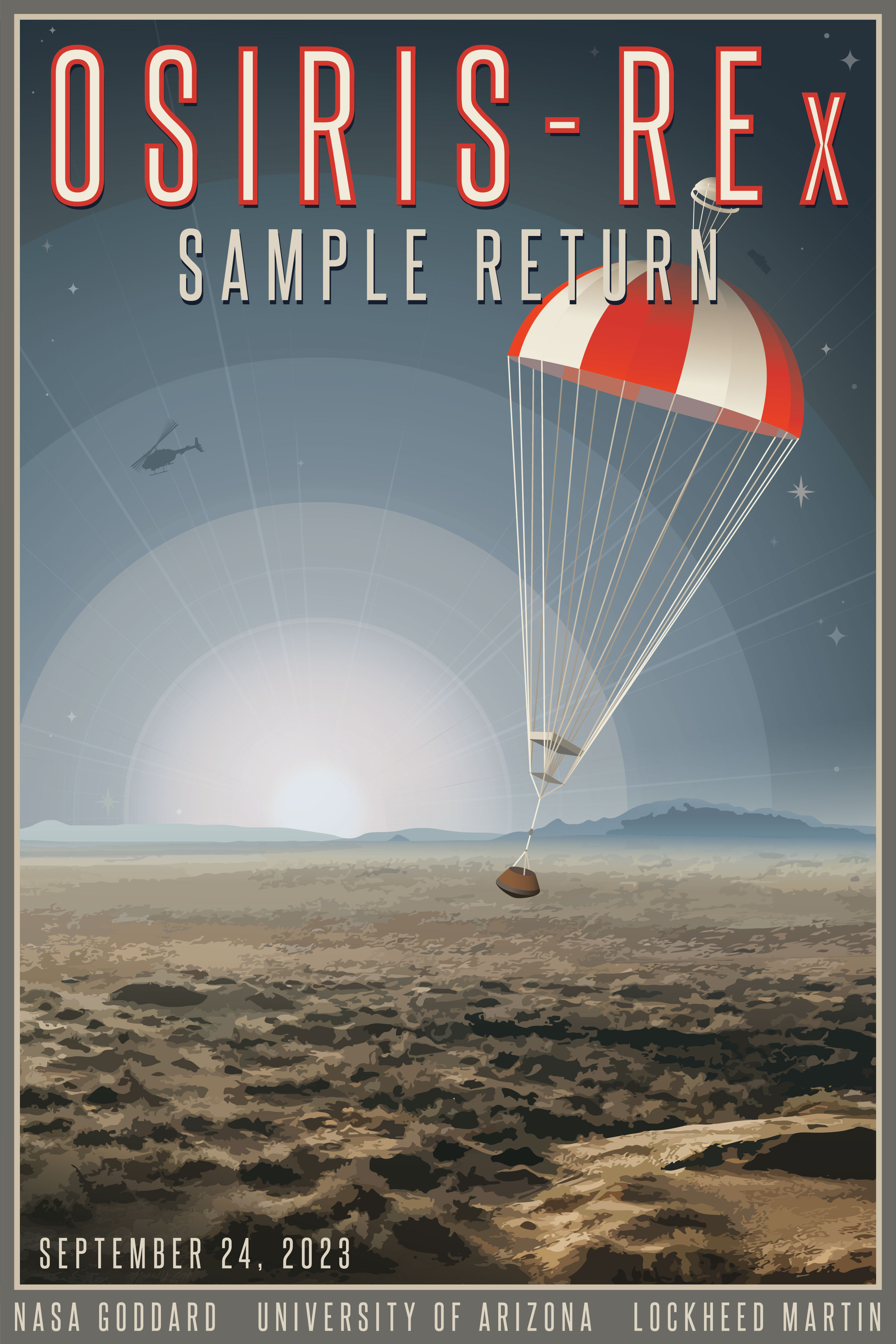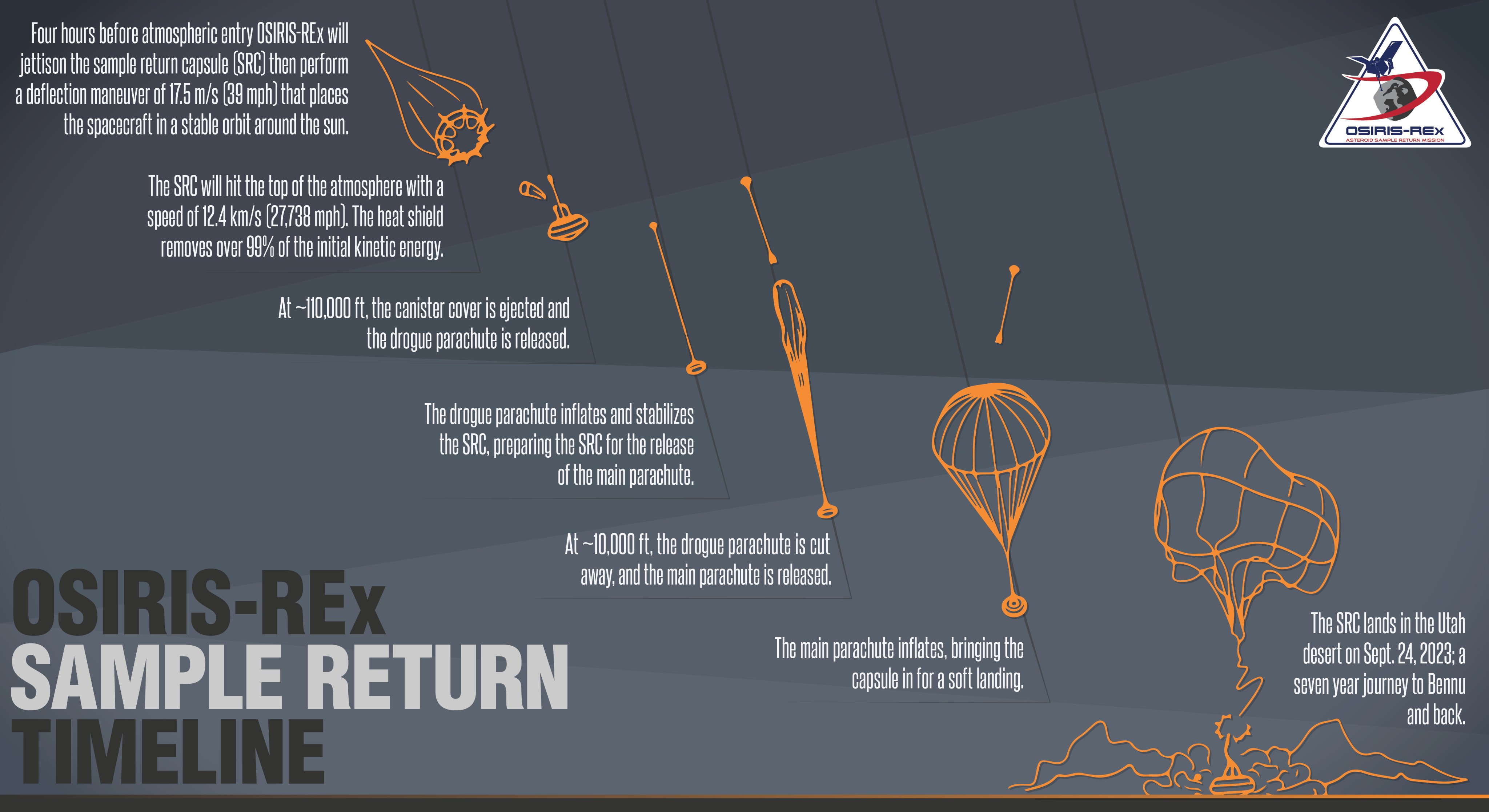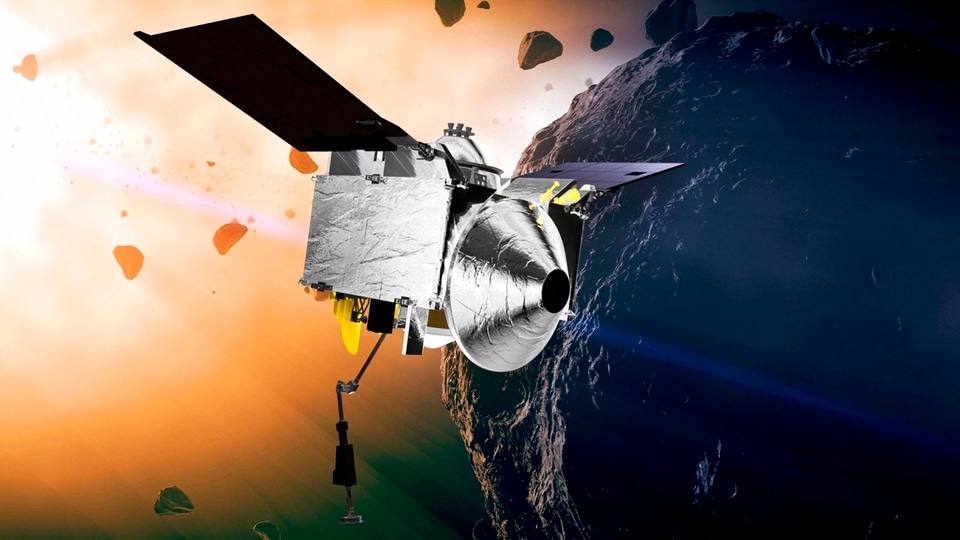- Media will have the opportunity July 20 to interview the researchers who provided essential technology that helped OSIRIS-REx capture and store the Bennu sample, as well as learn why NASA selected the Utah desert as the mission’s landing site.
- The mission team also will discuss OSIRIS-REx’s landing and recovery operations.
- Activities for media include a clean room facility tour and viewing the sample return capsule training model.
- NASA’s Goddard Space Flight Center in Greenbelt, Maryland, provides overall mission management, systems engineering, and the safety and mission assurance for OSIRIS-REx.
- Dante Lauretta of the University of Arizona, Tucson, is the principal investigator. The university leads the science team and the mission's science observation planning and data processing.
- Lockheed Martin Space in Littleton, Colorado, built the spacecraft and provides flight operations.
- Goddard and KinetX Aerospace are responsible for navigating the OSIRIS-REx spacecraft.
- Curation for OSIRIS-REx, including processing the sample when it arrives on Earth, will take place at NASA’s Johnson Space Center in Houston.
-end-
Karen Fox / Alana Johnson
Headquarters, Washington
202-358-1275 / 202-358-1501
karen.c.fox@nasa.gov / alana.r.johnson@nasa.gov
Rani Gran / Rob Garner
NASA’s Goddard Space Flight Center, Greenbelt, Md.
301-332-6975 / 301-286-5687
rani.c.gran@nasa.gov / rob.garner@nasa.gov
NASA's OSIRIS-REx mission: First Asteroid Sample return started | Tech News
NASA dropping ‘scientific time capsule’ from beginning of solar system into Utah desert
OSIRIS-REx will land Sept. 24 at the Utah Test and Training Range in Dugway
The most dangerous asteroid in the solar system is coming to Earth this fall — a piece of it, at least — as part of NASA's first U.S. mission to collect a sample from an asteroid will make its landing in the Utah desert. OSIRIS-REx will land Sept. 24 at the Utah Test and Training Range in Dugway.
"It's a scientific time capsule from the very beginning of our solar system," University of Arizona principal investigator Dante Lauretta said of Bennu. "It's older than the earth, and it really tells us about where we came from."

Military installations at Dugway Proving Grounds are pictured on Thursday.
Spenser Heaps, Deseret News
Why Utah?
- This isn't the first time the Utah Test and Training Range has been used as a landing site.
- NASA's Stardust and Genesis missions both brought pieces of comets back to the Utah desert.
- It's about the same square mileage as Rhode Island, and far from populated areas, making it the perfect place to test biochemical weapons to improve the nation's defense — but also making it the perfect place to land space equipment.
- "Utah's becoming the place to drop capsules from outer space in the United States," Lauretta said.
- "This is huge for Utah," said Lindsay Carl, the Utah Test and Training Range range control officer.

Dante Lauretta, the OSIRIS-REx principal investigator from the University of Arizona, poses at Dugway Proving Grounds on Thursday.
Spenser Heaps, Deseret News
What’s next?
- It will drop off its capsule Sept. 24 without landing, then embark on mission OSIRIS-APEX to explore the asteroid Apophis.
- The OSIRIS-REx mission also marks a unique turning point for NASA, as it entails many firsts for the agency, Lauretta said.
- Along with collecting the United States' first asteroid sample, this mission has included a new level of contamination control and better documentation of samples that he said will "become the agency standard moving forward."
Lauretta said the contamination protocol and biosphere interaction policies learned from OSIRIS-Rex will be influential in an upcoming sample mission to Mars.
"Sample return is kind of the way we're going to explore the solar system in the future, and a lot of what we've done on OSIRIS-REx is going to be a pathfinder for future missions," Lauretta said.
 A box that will transport asteroid samples collected by OSIRIS-REx is pictured at Dugway Proving Grounds on Thursday, July 20, 2023.
A box that will transport asteroid samples collected by OSIRIS-REx is pictured at Dugway Proving Grounds on Thursday, July 20, 2023. After the capsule touches down in the remote Utah desert, the samples will be unloaded at Dugway before being transported to the Johnson Space Center in Houston inside this box."
Spenser Heaps, Deseret News









No comments:
Post a Comment